#Mark Wakefield
Explore tagged Tumblr posts
Text




It's difficult to believe that 6 years ago today, we lost a legend. It'd be an understatement to say that Chester helped an entire generation of teens express themselves through his music and there's not a day that goes by that he is not sorely missed.
RIP Chester Bennington 1976-2017
Who cares if one more light goes out? Well I do
#linkin park#chester bennington#in the end#numb#crawling in my skin#crawling#breaking the habit#music videos#my gifs#hybrid theory#meteora#mike shinoda#joe hahn#brad delson#dave farrell#scott koziol#kyle christener#mark wakefield#rob bourdon#tagging the whole crew#rip chester :(#nu metal#hard rock#90s bands#living things#hunting party#minutes to midnight#scheduled post#make Chester proud#linkin park gifs
499 notes
·
View notes
Text
still so pissed they never remastered Fuse for HT's 20th anniversary
youtube
one of my favorite Xero tracks, but since it uses a Disney sample in the beginning, it's hard for them to remaster without getting into legal bullshit.
"WHY WAIT, I SHOULDN'T HAVE TOLD YOU SO" part is so fucking good
2 notes
·
View notes
Text
100+ Rock Band Posters and Canvas Prints
Print Option: ♦ Framed Poster Print ♦ Canvas Print ♦ Metal Print ♦ Acrylic Print ♦ Wood Prints 🌐 Worldwide shipping
#Linkin Park#Chester Bennington#Mike Shinoda#Joe Hahn#Dave Farrell#Rob Bourdon#Brad Delson#Mark Wakefield#Kyle Christner#Scott Koziol#rock band#Hybrid Theory#Meteora#Minutes to Midnight#A Thousand Suns#Living Things#The Hunting Party#One More Light#One More Light World Tour
3 notes
·
View notes
Text
I think the ares kids would adopt Nico as their honorary baby sibling that they all agreed to never fight with like they fight each other. Ares (and most likely his kids too) are very fond of prisoners of war (the giants held Nico hostage in a tiny air tight jar for at least 9 days straight). And also Nico was being raised to fight in world war 2 and most likely had veterans of world war 1 in his family and community and probably knows a lot about history from back then (both from his own personal experience and from ghosts and his own research) so I feel like he would bond with fellow military brats who also love war history. He also could bond with them over somewhat similar necromancy powers (Clarrise can raise dead soldiers from a loosing war and onetime was mentioned to use skeletal horses in a chariot race maybe other ares kids can do that too and Nico can raise the dead in general so everybody is wary and scared and creeped out by their powers they definitely bond over that). Just Nico being besties with all the ares kids and no matter how much the ares kids fight each other they all agree that not only is Nico sacred and off limits for prisoner of war reasons, but also that Nico could overpower all of them together in a heart beat and have them all dead nothing but dust and bones with just a snap of his fingers and they’re all kinda terrified of making him angry so they don’t even fight with each other while Nico’s around and the definitely don’t fight with Nico. Ever. For many different reasons.
#Nico di Angelo#ares cabin#Ares#ares PJO#Clarisse La Rue#Sherman Yang#Ellis Wakefield#Mark#PJO#Percy Jackson and the Olympians#HoO#Heroes of Olympus#ToA#Trials of Apollo#riordanverse
31 notes
·
View notes
Text
“Mark Hoffman served the most cunt!!!” Ok then how come Lawrence outcunted him so hard in saw 3D that he fucking died? If he’s so cunty then how come he has some of the worst lines in the entire series (‘epic bad luck’ ass bitch)?? IF YOURE GOING TO LOOK ME IN THE EYES AND TELL ME HE’S SERVED THE MOST CUNT IN THE ENTIRE SAW FRANCHISE, THEN YOU ALSO NEED TO LOOK ME IN THE EYES AND TELL ME WHY HE LOOKS LIKE A REINCARNATION OF ANDREW WAKEFIELD.
THERE IS A REASON I LEFT HIM OUT OF THE POLL GUYS, CONTEXT CLUES FOR CHRISTS SAKE
#gay#sawposting#saw movies#saw franchise#I hate mark hoffman#h*ffman fans dni#Andrew wakefield ain’t even dead yet thats how ugly he is
104 notes
·
View notes
Text
Cabin 5 Shenanigans
Ellis: You know guys, sometimes I feel like Sherman doesn't take me seriously enough.
Mark: "Sometimes"?
Clarisse: "Enough"?
Ellis:
Clarisse: Change that to 'at all' and we'll talk.
Ellis: How do Mark and Sherman usually get out of these messes?
Clarisse: They don't. They just make a bigger mess that cancels the first one out.
Ellis: Do you love Miranda?
Sherman: Yeah, I do.
Ellis: Clarisse! I told you I knew it! You owe me 100 bucks!
Clarisse: We all love Miranda. You should've asked if they were IN love with them.
Sherman: I thought that was implied.
Clarisse: ...
Mark: ...
Sherman, looking straight at Clarisse: Congrats Ellis, you just won 100 bucks.
Clarisse: You're smiling. What happened?
Mark: What? Can't I smile just because I feel like it?
Ellis: Sherman tripped and fell down the stairs today.
Clarisse: Christmas is cancelled.
Ellis: You can't cancel a holiday.
Clarisse: Keep it up, Ellis, and you'll lose New Year's too.
Ellis: What does that mean?
Clarisse: Sherman, take New Year's away from Ellis.
#clarisse la rue#ellis wakefield#sherman yang#mark pjo#cabin 5#pjo#pjo incorrect quotes#incorrect quotes
107 notes
·
View notes
Text
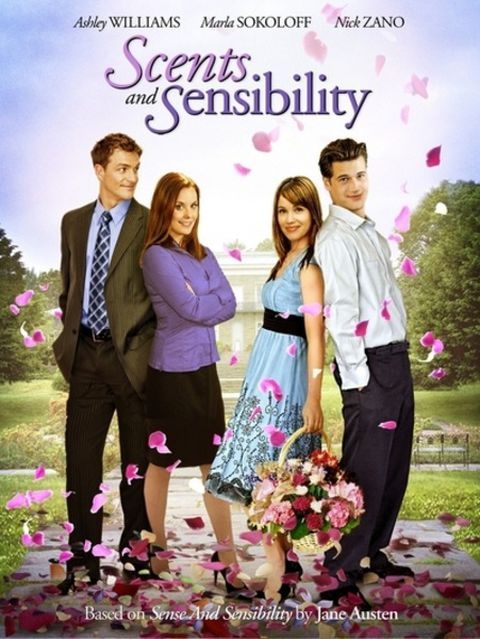
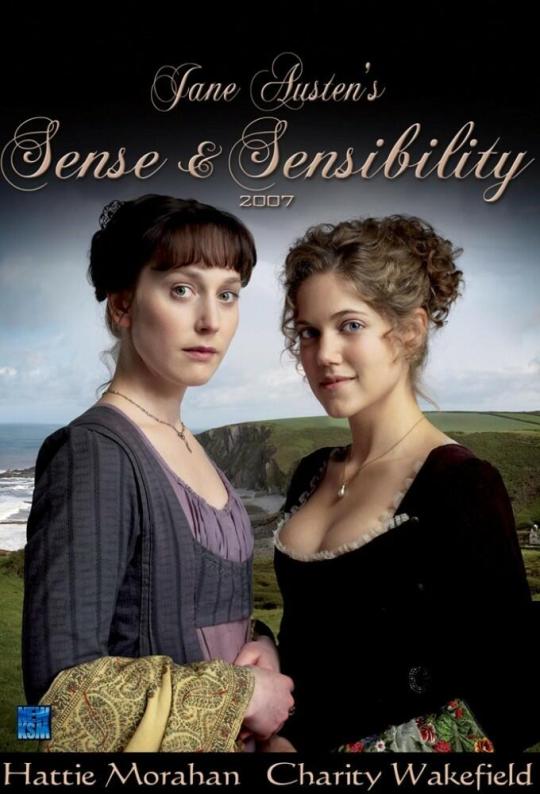
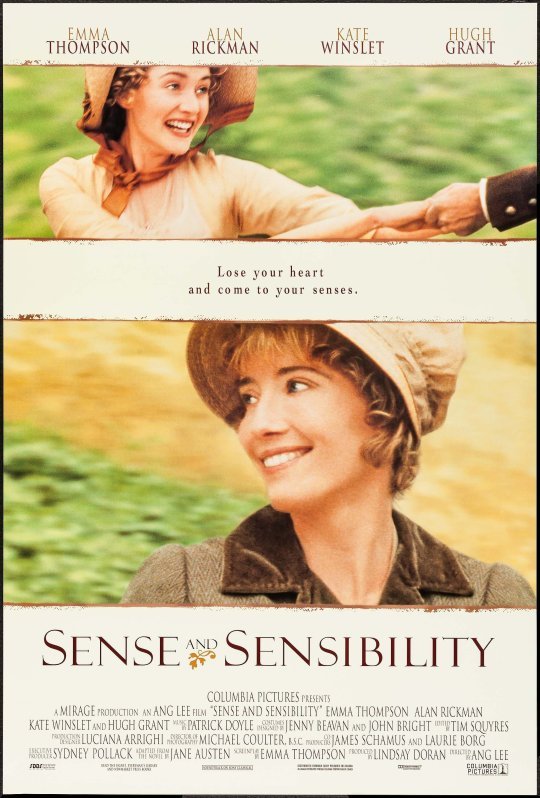
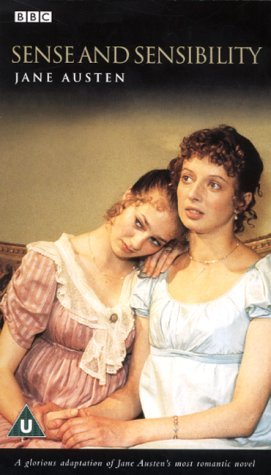

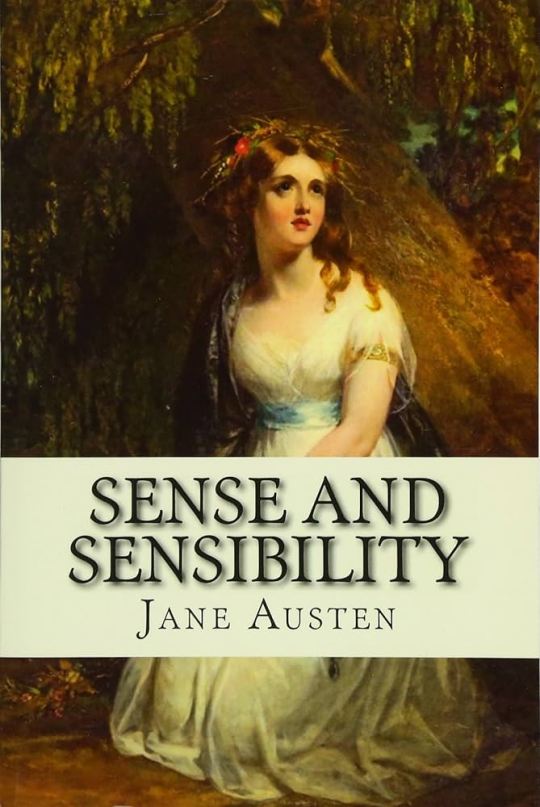
Sense and Sensibility / Sinn und Sinnlichkeit 1971 - 2011
#sense and sensibility#sinn und sinnlichkeit#marla sokoloff#ashley williams#nick zano#brian brough#hattie morahan#david morrissey#lucy boynton#charity wakefield#dan stevens#janet mcteer#dominic cooper#mark williams#john alexander#kate winslet#emma thompson#alan rickman#hugh grant#ang lee#irene richard#rodney bennett#joanna david#david giles
12 notes
·
View notes
Text
not sure if anyone is interested in this but here is a list of the most joyfully vital poems I know :)
You're the Top by Ellen Bass
Grand Fugue by Peter E. Murphy
Our Beautiful Life When It's Filled with Shrieks by Christopher Citro
Everything Is Waiting For You by David Whyte
Lawrence Ferlinghetti Is Alive! by Emily Sernaker
Instructions for Assembling the Miracle by Peter Cooley
Catalogue of Unabashed Gratitude by Ross Gay
Barton Springs by Tony Hoagland
Footnote to Howl by Allen Ginsberg
Song of the Open Road by Walt Whitman
Tomorrow, No, Tomorrower by Bradley Trumpfheller
At Last the New Arriving by Gabrielle Calvocoressi
To a Self-Proclaimed Manic Depressive Ex-Stripper Poet, After a Reading by Jeannine Hall Gailey
In the Presence of Absence by Richard Widerkehr
Chillary Clinton Said 'We Have to Bring Them to Heal' by Cortney Lamar Charleston
Midsummer by Charles Simic
Today by Frank O'Hara
Naturally by Stephen Dunn
Life is Slightly Different Than You Think It Is by Arthur Vogelsang
Ode to My Husband, Who Brings the Music by Zeina Hashem Beck
The Imaginal Stage by D.A. Powell
Lucky Life by Gerald Stern
Beginner's Lesson by Malcolm Alexander
Presidential Poetry Briefing by Albert Haley
A Poem for Uncertainties by Mark Terrill
On Coming Home by Lisa Summe
G-9 by Tim Dlugos
Five Haiku by Billy Collins
The Fates by David Kirby
Upon Receiving My Inheritance by William Fargason
Variation on a Theme by W. S. Merwin
Easy as Falling Down Stairs by Dean Young
Psalm 150 by Jericho Brown
Pantoum for Sabbouha by Zeina Hashem Beck
ASMR by Corey Van Landingham
A Welcome by Joanna Klink
From Blossoms by Li-Young Lee
At Church, I Tell My Mom She’s Singing Off-Key and She Says, by Michael Frazier
Hammond B3 Organ Cistern by Gabrielle Calvocoressi
Sorrow Is Not My Name by Ross Gay
You Can't Have It All by Barbara Ras
We Were Emergencies by Buddy Wakefield
To the Woman Crying Uncontrollably In the Next Stall by Kim Addonizio
Monet Refuses the Operation by Lisel Mueller
The City Limits by A.R. Ammons
#ill probs add to this later#this is mostly for me bc sometimes i just want a collection of happy poems#poetry
10K notes
·
View notes
Text
"SENSE AND SENSIBILITY" (2008) Review

"SENSE AND SENSIBILITY" (2008) Review
The year 2008 marked the fourth adaptation of Jane Austen’s 1811 novel, "Sense and Sensibility". First aired on the BBC, this three-part miniseries had been adapted by Andrew Davies and directed by John Alexander.
"SENSE AND SENSIBILITY" told the story of the two older of three sisters and their financial and romantic travails in early 19th century England. Elinor and Marianne Dashwood, along with their mother and young sister, Margaret; found themselves homeless and in financial straits following the death of their father. Their elder half-brother, John Dashwood, had promised their father he would financially compensate them, since the Norland Park estate was entailed to the male heir. Unfortunately, John possessed the backbone of jelly and allowed his venal wife Fanny to convince him into withholding any financial assistance from the Dashwood women. Fanny received a shock when her younger brother, Edward Ferrars, paid a visit and ended up becoming romantically involved with Elinor. Before their romance could flourish; Elinor, her sisters and her mother were forced to leave Norland Park. They settled at a cottage in Devon, owned by Mrs. Dashwood’s cousin, Sir John Middleton.
Upon settling in Devon, the Dashwoods became acquainted with the gregarious Sir John, his chilly wife and his equally extroverted mother-in-law, Mrs. Jennings. Marianne attracted the attention of two potential suitors – Sir John’s neighbor and former Army comrade, Colonel Christopher Brandon; and a handsome young blade named John Willoughby. Being seventeen and emotionally volatile, Marianne preferred the handsome Willoughby over the more stoic Colonel Brandon. And Elinor began to wonder if she would ever lay eyes upon Edward Ferrars again.
Unlike Ang Lee and Emma Thompson’s 1995 adaptation of Austen’s novel, John Alexander and Andrew Davies had decided to be a little more faithful to Austen’s novel. They included Lady Middleton, the autocratic Mrs. Ferrars and both Steele sisters – Lucy and Anne – to the story. They also included Edward Ferrars’ brief visit to the Dashwoods’ cottage, the dinner party at Mrs. Ferrars’ London house and a contrite Willoughby’s conversation with Elinor. But for me, being faithful to a literary source does not guarantee a superior production. If Alexander and Davies called themselves creating a production more faithful and superior to the 1995 movie, I do not believe they had succeeded. I am not saying that this ”SENSE AND SENSIBILITY” was a terrible production. On the contrary, I believe it was first-rate. I simply believe that the 1995 movie was a better adaptation.
This three-part miniseries had a lot going for it. Both Davies and Alexander beautifully captured most of the heart of soul of Austen’s tale. And aside from a few scenes, it was wonderfully paced. ”SENSE AND SENSIBILITY” captured the financial and social dilemma faced by the Dashwood females, upon the family patriarch’s death. The miniseries’ style permeated with warmth, solidity and color. The production designs created by James Merifield did an excellent job in sending viewers back to early 19th century England. But I must give kudos to cinematographer Sean Bobbitt, who received a well deserved Emmy nomination for his beautiful photography. The Devon, Hertfordshire and Surrey countryside looked rich and lush in color. I also enjoyed Michele Clapton’s colorful costumes, which earned a BAFTA nomination. Were they historically accurate? I do not know. I am not an expert in early 19th century fashion. However, I do have a question. Was ”SENSE AND SENSIBILITY” set during the decade of 1800-1809? Or was it set between 1810 and 1819? According to the family tree briefly shown in the following photo, the movie was set around 1800-1801:

There were some aspects of ”SENSE AND SENSIBILITY” that did not appeal to me. As much as I had enjoyed Merifield’s production designs, I found it disappointing that the majority of the London sequences featured interior shots. Which meant that viewers failed to get a truly rich view of early 19th century London. But most of my quibbles were about a few scenes that struck me as unnecessary. The miniseries opened with a young couple making love in the candlelight. Viewers easily surmised the identities of the pair – John Willoughby and Colonel Brandon’s young ward, Eliza. Perhaps this was Davies’ way of foreshadowing Willoughby’s character and his near seduction of Marianne. This was the first scene I found unnecessary and heavy-handed. There are some stories in which the use of foreshadowing as a literary device work very well. This particular scene failed to work for me. Another scene that struck me as unnecessary was Edward Ferrars’ brief visit to Barton Cottage. This scene was lifted from the novel and was used to foreshadow Elinor’s discovery of his engagement to Lucy Steele. Again, the use of foreshadow failed to work for me. I would have preferred that the audience’s knowledge of the Edward-Lucy engagement had been revealed as a complete surprise to them, as well as to Elinor.
Two more scenes also failed to impress me. Austen’s novel had hinted a duel between Willoughby and Brandon over the former’s seduction of young Eliza. Davies’ screenplay included the duel, after Willoughby’s rejection of Marianne and the birth of his and Eliza’s child. This duel would have served better following Willoughby’s seduction. In fact, I wish that Davies had not included it at all. For a brief moment, I found myself confused on whether the duel was fought over Eliza or Marianne. The scene also seemed to be an indication of Davies and Alexander’s attempt to inject some overt masculinity into Austen’s tale. The last scene that Davies carried over from the novel featured Willoughby’s expression of remorse to Elinor, over his treatment of Marianne. I must admit that I found that scene a little contrived and unnecessary. Willoughby’s reasons behind his abandonment of Marianne and his embarrassment at the assembly ball seemed pretty obvious to me. And in the 1995 version, the expression on Greg Wise’s face fully expressed Willoughby’s remorse more effectively than any of Austen’s (or Davies’) words.
Despite my misgivings, I must admit that ”SENSE AND SENSIBILITY” possessed a first-rate cast. Both Hattie Morahan and Charity Wakefield gave solid performances as the story’s two heroines – Elinor and Marianne Dashwood. Morahan nicely portrayed the sober and level-headed aspects of Elinor’s personality. Yet at the same time, she conveyed subtle hints of the character’s emotions behind the mask. I found it difficult to believe that Morahan’s Elinor was 19 to 20 years-old in this story. She looked and behaved like a person who was at least 5 to 10 years older. Morahan had a tendency to utilize this ”deer-in-the-headlights” expression, whenever Elinor was surprised. Wakefield gave a decent performance as the volatile Marianne. She portrayed the character as written by Austen – an emotional and thoughtless adolescent with a kind heart. Were young females in their late teens really expected to behave in a mature manner, consistently? My only problem with Wakefield was there were a few moments when her performance seemed mechanical with hardly any style or true skill.
The miniseries received fine support from the likes of Janet Teer as the emotional Mrs. Dashwood, Mark Williams as the jovial Sir John Middleton, Jean Marsh as Mrs. Ferrars, Mark Gatiss as the vacuous John Dashwood and young Lucy Boynton as Margaret Dashwood. In his first scene, Dan Stevens seemed to hint that his interpretation of Edward Ferrars might prove to be a little livelier than past interpretations. It was a hint that failed to flourish. His Edward proved to be just as mild. At least his performance was adequate. When the miniseries first aired in Britain nearly three years ago, the media had declared Dominic Cooper as the new sex symbol of British costume drama. After seeing his performance as John Willoughby, I found this hard to swallow. But he did give a first-rate performance. But there were performances that failed to impress me. One, I had a problem with the Steele sisters. Anna Madeley’s performance as the subtle, yet catty Lucy Steele seemed perfectly fine with me. But I found Daisy Haggard’s broadly comic take on Anne Steele ridiculously overdone. And I never could understand why one Steele sister spoke with a well-bred accent (Lucy) and the other with a regional accent that strongly hinted of the lower classes. Very inconsistent. I also had a problem with Rosanna Lavelle as Sir John’s cold wife, Lady Middleton. She barely seemed to exist. In fact, I never understood why Davies did not follow Emma Thompson’s example by deleting the character altogether. Linda Bassett gave a friendly performance as Mrs. Jennings, Lady Middleton’s mother. But her portrayal lacked that deliciously meddlesome trait that prevailed in Austen’s novel and the 1995 movie. And I also found Bassett’s accent questionable. I could not tell whether her character was from amongst the upper or middle class.
At least two performances in ”SENSE AND SENSIBILITY” managed to impress me. One of those performances belonged to Claire Skinner, who portrayed the Dashwood sisters’ bitchy sister-in-law, Fanny Ferrars Dashwood. Skinner was truly superb as the venal and manipulative Fanny, who seemed more than determined to not only rule her husband, but also make her sisters-in-law miserable for the sake of her ego. My favorite Fanny scene featured that delicious montage in which she wore down John’s determination to help his sisters and stepmother financially. The other outstanding performance came from David Morrissey’s portrayal of the stoic Colonel Brandon. As much as I admire Morrissey’s skills as an actor, I have found some of his performances a little too theatrical at times. I certainly cannot say the same about his performance in ”SENSE AND SENSIBILITY”. He perfectly captured the quiet nuance of his character; and at the same time, expressed Brandon’s passion for Marianne through facial expressions and body language.
”SENSE AND SENSIBILITY” may have been marred by scenes that I found unnecessary and lacked a witty sense of humor and something of an edge; but it still turned out to be an intelligent and solid adaptation of Austen’s novel. And fans of Austen’s novel can thank Andrew Davies’ script, John Alexander’s direction, Sean Bobbitt’s photography and a solid cast lead by Hattie Morahan and Charity Wakefield.

#sense and sensibility#sense and sensibility 2008#hattie morahan#charity wakefield#dan stevens#david morrissey#dominic cooper#janet mcteer#lucy boynton#anna madeley#claire skinner#mark gatiss#jane austen#jean marsh#linda bassett#mark williams#tim mcmullan#daisy haggard
1 note
·
View note
Text
also got the mess that is the pre-2000 history of LP sorted i think
this one is first. i couldn't find a video version.
then this one, with Dialate (one of if not my favorite XERO tracks
youtube
and then there's the most well-known version of XERO.
youtube
this is pretty confusing bc they're all called XERO (1997) on the linkinpedia
and then the Hybrid Theory EP, followed by the actual hybrid theory in 2000.
youtube
also what was with xero / hybrid theory and creepy babies lmao
0 notes
Text
WOW.
Scientists found an amazingly well-preserved village from 3,000 years ago
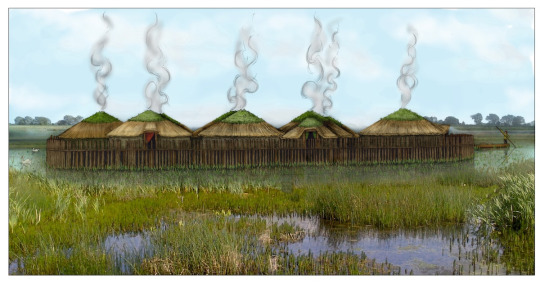

Text below, in case article access dries up:
LONDON — A half-eaten bowl of porridge complete with wooden spoon, communal rubbish bins, and a decorative necklace made with amber and glass beads are just a handful of the extraordinarily well-preserved remnants of a late Bronze Age hamlet unearthed in eastern England that’s been dubbed “Britain’s Pompeii” and a “time capsule” into village life almost 3,000 years ago.
The findings from the site, excavated in 2015 to 2016, are now the subject of two reports, complete with previously unseen photos, published this week by University of Cambridge archaeologists, who said they cast light onto the “cosy domesticity” of ancient settlement life.
“It might be the best prehistoric settlement that we’ve found in Britain,” Mark Knight, the excavation director and a co-author of the reports, said in an interviewThursday. “We took the roofs off and inside was pretty much the contents,” he said. “It’s so comprehensive and so coherent.”
The reason for the rare preservation: disaster.
The settlement, thought to have originally consisted of several large roundhouses made of wood and constructed on stilts above a slow-moving river, was engulfed by a fire less than a year after being built.
During the blaze, the buildings and much of their contents collapsed into a muddy river below that “cushioned the scorched remains where they fell,” the university said of the findings. This combination of charring from the fire and waterlogging led to “exceptional preservation,” the researchers found.
“Because of the nature of the settlement, that it was burned down and its abandonment unplanned, everything was captured,” Knight added.
“As we excavated it, there was that feeling that we were picking over someone else’s tragedy,” he said of the eerie site in the swampy fenland of East Anglia. “I don’t think we could smell the fire but the amount of ash around us — it felt close.”
Researchers said they eventually unearthed four large wooden roundhouses and an entranceway structure, but the original settlement was probably “twice as big.”
The site at Must Farm dates to about 850 B.C., eight centuries before Romans came to Britain. Archaeologists have been shocked at “just how clear the picture is” of late Bronze Age life based on the level of detail uncovered, Knight said.
The findings also showed that the communities lived “a way of life that was more sophisticated than we could have imagined,” Duncan Wilson, head of Historic England, the public body responsible for preserving England’s historic environment, said in a statement.
The findings unearthed include a stack of spears, possibly for hunting or defense; a decorative necklace “with beads from as far away as Denmark and Iran”; clothes of fine flax linen; and a female adult skull rendered smooth, “perhaps a memento of a lost loved one,” the research found.
The inhabitants’ diet was also rich and varied, including boar, pike and bream, along with wheat and barley.
A pottery bowl with the finger marks of its maker in the clay was also unearthed, researchers said, still containing its final meal — “a wheat-grain porridge mixed with animal fats” — with a wooden spatula resting inside the bowl.
“It appears the occupants saved their meat juices to use as toppings for porridge,” project archaeologist Chris Wakefield said in the university’s news release. “Chemical analyses of the bowls and jars showed traces of honey along with ruminant meats such as deer, suggesting these ingredients were combined to create a form of prehistoric honey-glazed venison,” he added.
Skulls of dogs — probably kept as pets and to help with hunting — were also uncovered, and the dogs’ fossilized feces showed they fed on scraps from their owners’ meals, the research found.
The buildings, some connected by walkways, may have had up to 60 people living there all together, Knight said, along with animals.
Although no intact sets of human remains were found at the site, indicating that the inhabitants probably fled the fire safely, several sheep bones were found burned indoors. “Skeletal remains showed the lambs were three to six months old, suggesting the settlement was destroyed sometime in late summer or early autumn,” according to the university’s news release.
Ceramic and wooden vessels including tiny cups, bowls and large storage jars were also found. Some pots were even designed to nest, stacked inside one another, Knight said — evidence of an interest in aesthetics as well as practicality.
A lot of similar items were found replicated in each home, Knight added, painting the picture of completely independent homesteads for each family unit rather than distinct buildings for shared tasks — much like we live today.
Household inventories often included metal tools, loom weights, sickles for crop harvesting, axes and even handheld razors for cutting hair.
The roundhouses — one of which had almost 50 square meters (nearly 540 square feet) of floor space — had hearths and insulated straw and clay roofs. Some featured activity zones for cooking, sleeping and working akin to modern-day rooms.
The Must Farm settlement has produced the largest collection of everyday Bronze Age artifacts ever discovered in the United Kingdom, according to Historic England, which partly funded the 1.1 million pound ($1.4 million) excavation project.
The public body labeled the site a “time capsule,” including almost 200 wooden artifacts, over 150 fiber and textile items, 128 pottery vessels and more than 90 pieces of metalwork. Some items will go on display at the nearby Peterborough Museum next month.
Archaeologists never found a “smoking gun” cause for the fire, Knight said. Instead, they suspect it was either an attack from “outside forces,” which may explain why the inhabitants never returned to collect their possessions from the debris, or an accidental blaze that spread rapidly across the tightly nestled homes.
“Probably all that was left was the people and what they were wearing; everything else was left behind,” Knight said of the fire.
But the preservation has left a window for people to look back through in the future. “You could almost see and smell their world,” he said.
“The only thing that was missing was the inhabitants,” Knight added. “And yet … I think they were there — you certainly got glimpses.”
4K notes
·
View notes
Photo

The Reunion by @winterofherdiscontent commissioned for Garden of Monsters
#Buried Empire#Wolf Hall#Wolf Hall fanfiction#Mark Rylance#charity wakefield#this was something I commissioned for the end of my fanfiction.#one of the things that pleased me about this was that it was falling dusk#difficult to convey...#anyway here it is again#thanks new mutual looking at my old stuff#winter of our discontent
28 notes
·
View notes
Text
Fix Your Hearts and Live
"I don’t want to give any straight man too much credit, but long before the lesbian prestige dramas of the 2010s, Lynch’s Mulholland Drive (2001) put lesbian romance on centre stage. And not some softcore pillow fight fantasy or staid period drama of unrequited yearning. He gave us Naomi Watts sobbing in a filthy apartment while she masturbates to memories of the woman she loved and was spurned by. Now that’s representation, baby!
Complicated, passionate relationships between women caught in a world marked by male violence were a frequent motif in his work — whether it be the lesbian actresses of Mulholland Drive, Laura Palmer and her many frenemies in Twin Peaks, or in Inland Empire where a kiss between women is what finally frees the dreamer from her suffering.
The Lynchian woman is not singular, but you know her when you meet her. Lynch’s camera had a empathetic eye toward women not often found in straight men’s cinema, and I think this is why women — both the actresses he worked with, and many, many women critics and audiences — connect so intensely to his characters. Like so many, I saw pieces of myself in Audrey Horne, in Alice Wakefield, in Laura Palmer. Lynch’s “women in trouble” are often constrained and exploited by their worlds, but they never felt exploitative because there was a light of compassion shining through them.
It is through women that Lynch reminds us: No matter how dark it gets, there is always the possibility for suffering to end."
-via Fix Your Heart and Live, a tribute to David Lynch by Morgan M Page
55 notes
·
View notes
Text
Riordanverse race/nationality headcanons (Main characters and background characters alike)
This may be a very long post, and I’m throwing in little tidbits about appearances, so with no regard to any particular order, strap in:
(Seriously, this is a huge post)
Edit: Changed Luke from just Korean American to mixed Argentinian/Korean American, inspired by @tagthescullion
The Seven (Including Nico and Reyna):
Percy Jackson: Biracial White/Latino, Cuban American (Sally was born in Havana, she had Percy shortly after moving to the US)
Annabeth Chase: Biracial Black/White, Irish/African American (with Swedish, Ghanaian and Polish descent)
Jason (And Thalia, by extension) Grace: White German American (Beryl moved from Germany to the US)
Piper McLean: Native American, Cherokee
Leo Valdez: Latino, Mexican, Born in Texas
Hazel Levesque: Black, African American, New Orleans (1940's French Creole)
Frank Zhang: Chinese Canadian, Vancouver
Nico Di Angelo: White, Italian with Russian descent, 1920’s Venice
Reyna Avila Ramirez Arellano: Latina, Puerto Rican
Camp Half Blood:
Will Solace: Biracial White/Bangladeshi American, Texas
Luke Castellan: Mixed Argentinian/Korean American (Born in the US, May (or Mi-Hee) grew up in a Argentine Korean community in Buenos Aires before she moved to the US and met Hermes)
Malcolm Pace: White with albinism, Scottish, Glasgow
Travis and Connor Stoll: Mixed Scottish and Laotian, Edinburgh (Source: @freddie-77-ao3)(I think in the TV show, they cast two Asian boys as the Stolls, so I've made them Asian)
Alice Miyazawa: Japanese American, Los Angeles
Julia Feingold: White Luxembourger, Luxembourg City
Cecil Markowitz: White Austrian/Northern Irish (Born in Graz, grew up in Belfast since he was two, has dual citizenship)
Katie Gardener: White Scottish, Aberfoyle
Castor and Pollux Vintner: Black, Irish (Pollux is Albino, Castor wasn’t), Donegal
Michael Yew: Mixed Irish and Chinese, Limerick (Granny moved from China)
Lee Fletcher: White Irish, Donegal
Clarisse La Rue: Mixed French/Pakistani American, Arizona (Mother moved from France)
Chris Rodriguez: Afro-Latino, Nicaraguan (Moved to the states when he was seven, lived in the same neighbourhood as Clarisse)
Silena Beauregard: Blasian, African American and Filipino, Mississippi (French descent)
Charles Beckendorf: Black, African American
Jake Mason: White American, Wyoming
Harley Smythe-Davidson: Biracial White/Aboriginal Australian (Source: @freddie-77-ao3)
Nyssa Barrera: Latina, Panamanian, Panama City
Shane O’Doherty: White Irish, Laois
Christopher Chalkevas: White Greek/English (Born in Larissa, moved with his mother to Hackney, London at age five, has dual citizenship)
Clovis Karlsen: Wasian, Welsh (Welsh/Norwegian grandad, Indonesian granny, Source: @ashthenerdtheythem)
Chiara Benvenuti: White Italian, Florence
Alabaster C. Torrington: British Indian, English, Westminster
Lou Ellen Blackstone: Black with vitiligo, British Ghanaian, Birmingham
Drew Tanaka: Japanese American, New York City
Valentina Diaz: Latina, Colombia
Mitchell Singh-Donovan: Mixed Indian and Irish, Cork
Lacy Alfsen: White Danish, Copenhagen
Ethan Nakamura: Japanese, Tokyo
Damien White: White Irish, Northside Dublin
Miranda Gardiner: Vietnamese American, Massachusetts (Distant Irish ancestry)
Billie Ng: Wasian, Irish/Thai Canadian, Toronto (She grew up in Longford till she was seven, then she and her mortal dad moved to Canada)
Sherman Yang: Chinese American, Alaska
Marcus (Mark) Dooley-Wallace: White Irish American, Georgia
Ellis Wakefield: Black, Algerian
Holly and Laurel Victor: Sri Lankan American, Seattle
Meg McCaffery: Wasian, Irish/Vietnamese American
Camp Jupiter:
Dakota Cheshire: Black, Bermudian
Gwendolyn Nunez: Hispanic, Spanish American
Bobby Herrera: Latin American, New Mexico
Lavinia Asimov: White Russian, born in San Francisco
Larry Schumacher: White American, North Carolina
Leila Grunfeld: White American, Colorado
This has been a very exhausting post to make lmao. I gave some of the characters who don’t have canonical surnames my own Hcs for their surnames. Also, I am yet to read through trials of Apollo, so maybe I’ll come later back to add more Roman names to the list.
Tagging my moots that I like to see their opinions for this (as well as the ones I tagged within the list as well):
@aki-bara @ravingcoffeeaddict @ebony-reine-vibes @squiggle3worm @sleep-needer
#percy jackson#annabeth chase#jason grace#piper mclean#leo valdez#hazel levesque#frank zhang#nico di angelo#reyna avila ramirez arellano#will solace#luke castellan#malcolm pace#travis and connor stoll#alice miyazawa#julia feingold#cecil markowitz#katie gardner#castor and pollux#michael yew#lee fletcher#clarisse la rue#chris rodriguez#damien white#silena beauregard#charles beckendorf#pjo#hoo#toa#riordanverse#misc skeptic thoughts
143 notes
·
View notes
Text
Ellis Wakefield, in absolute silence, watching Cecil run around the camp annoying people until he ends up smashing his face into a tree, and thinking "I want that one" while hating himself for it
Mark will have so many jokes. Sherman already hates Cecil and now he has more reasons. Clarisse is done with them all
(Ellis probably wouldn't be the easiest at first, I can see him struggling a lot with his feelings. But then he's all silly and in love, smiling so much that he scares his siblings
#ellis wakefield#cecil markowitz#cecellis#I cant believe they have a ship name that's crazy#god i love them#im totally normal about them#pjo headcanons#Riordanverse#pjo#toa#trials of apollo#pjoverse#ares cabin#clarisse la rue#yung sherman
63 notes
·
View notes
Text
In Hawthorne City, the welcome sign [would be] spelled out in scarlet letters. All the houses have a legally mandated seven gables. A marble faun is erected in the Common. Every minister at every church wears a black veil. Its favorite Halloween decoration is the scarecrow instead of the witch. The bars have names like The Great Stone Face and The Elixir of Life, and the hotels names like The Ambitious Guest and, well, the Hawthorne Hotel. And the high school mascot has a high forehead and a mustache. This could have been Salem had the Witch Trials never happened. I mean, not literally, but Salem would most likely only have been famous for being the city that gave us Nathaniel Hawthorne, the author who gave us The Scarlet Letter and The House of the Seven Gables, Young Goodman Brown and The Birth-Mark, Ethan Brand and Wakefield. The author who Herman Melville called the American Shakespeare. Whom Edgar Allen Poe called "one of the few men of indisputable genius to whom our country has as yet given birth." On the other hand, had the Salem Witch Trials never happened, we might not have had the Nathaniel Hawthorne we all are supposed to read in high school
J.W. Ocker, A Season with the Witch: The Magic and Mayhem of Halloween in Salem, Massachusetts
45 notes
·
View notes